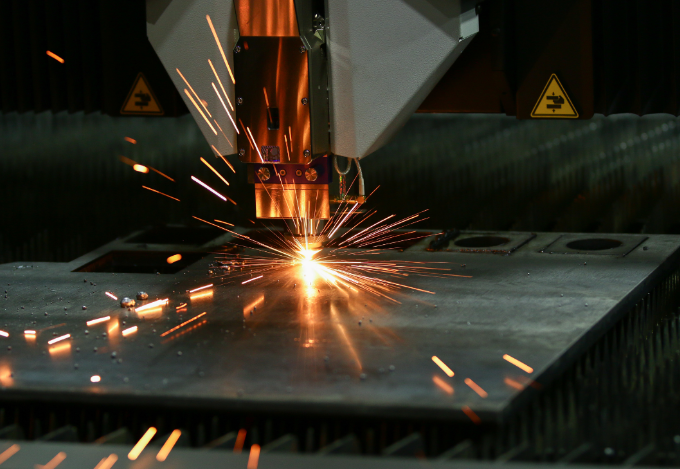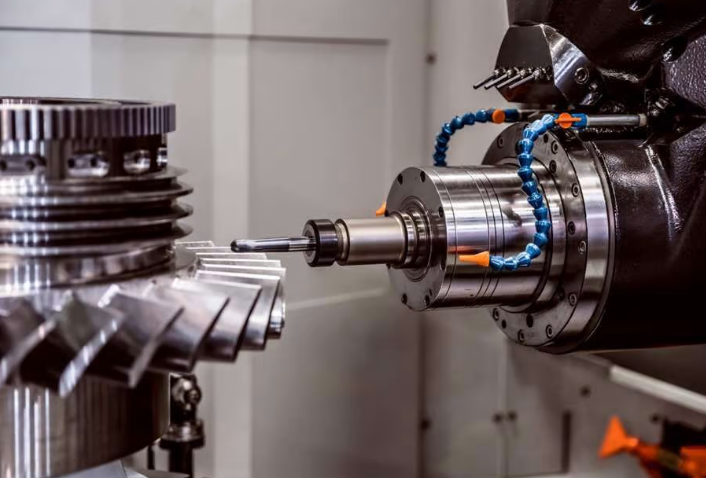The six biggest disadvantages of using CNC include high initial costs ranging from $50,000 to $500,000, ongoing maintenance expenses up to $10,000 annually, the need for skilled operators with training costs around $1,000 to $5,000, significant software costs that can exceed $20,000, reduced flexibility in switching production setups, and dependence on stable electricity supply, requiring costly backup power solutions.
High Initial Cost
CNC machines are expensive
Particularly for small businesses or independent manufacturers, CNC machines represent a considerable expense. A new CNC machine can cost anything from about $50,000 for a basic machine to well over half a million dollars for the more sophisticated multi-axis versions. This geographical discrepancy in price means that potential buyers need to have enough ready money to purchase the machines.
A small job shop, for example, wishing to upgrade from manual production to CNC might have to budget around $150,000 for a C-frame or mid-range machine. Installation costs can also be substantial as installing a CNC machine often involves not just moving mechanical and electrical parts, but also setting up the necessary computer systems and software, which can add another $10,000 to $20,000 for the finish item. This high initial expense involved with the use of a CNC machine makes it difficult for some of the smallest bodies to invest, which means these companies have to source loans or allow external investment.
To counteract these costs, companies might consider leasing CNC machines. These allow the individual to place a much smaller outlay monthly, which conversely lends itself to that individual’s cash flow. Alternatively, buying used CNC equipment can cut the initial into up to 50%, though at the expense of generally higher maintenance costs and a shorter lifetime for the piece.

Maintenance and Repair Cost
The maintenance and repair of CNC machine technologies can significantly add to the total cost of ownership, and as such, remains one of the critical aspects of consideration by any business employing this tool. This routine activity is essential for the correct functioning and operation with regard to these machines but is costly. For instance, typical annual maintenance with regard to medium complexity CNC machines may cost from $5,000 to $10,000 each year. The specific price would vary depending on the overall complexity and type of a machine and the frequency of its use.
This money would typically cover the cost of routine inspections, such as oil chances and cleaning the system of chips, part replacement, and system upgrades. Repairs remain another major cost. Since it is a widespread belief that CNC machines are already programmed for optimum operation, rebuilding is quite common – however, is an expensive process. This is because the tools used are extremely complex, and the machinists performing the task need to be exceedingly skilled professionals. As such, technician costs typically come around a hundred dollars an hour, and if the components, such as complete spindle assemblies or even full manufacturing system controls, need replacement, the cost can run into the thousands. To provide an example, a typical spindle rebuild with respect to a standard CNC milling machine typically costs $4,000-$7,000.
There are several strategies for dealing with these costs. One of the most popular ones remains the creation of a preventive maintenance schedule for technicians to check-up on a monthly basis. Armed with the knowledge of possible upcoming repairs at early stages, an organization can preempt the necessity of major reconstruction. Alternatively, some organizations train their staff to perform basic CNC maintenance.
Casinos, for instance, already employ special machinery skill operators and train these individuals to perform sports techniques. In both these cases, the requirement for a specialist technician performing maintenance is avoided, and the overall maintenance price goes down. In the case of investment of the machine, a business might decide to take a risk and sign a comprehensive service agreement with the provider. Investing monthly $250 definitely provides the user with the comfort of mind and may even be more cost-effective in the long run since not only a large range of additional repairs may cover the machine may not require the Cabinetmaker to pay for a lot of preventive maintenance, extending the life of the machine, and making it more expensive to resell.
Training and Skilled Operators
One significant barrier in CNC machines it that highly skilled operators are required. These machines are prevalent in industries which typically have a talent shortage in the manual labor sector. Not only must they possess the basic knowledge for all machining work, but they must also have the computer programming and engineering skills which are required for using CNC machines. In addition, there are hardware and software aspects of the machine which operators must understand in order to maximize the use of these machines and troubleshoot any problems.
The time spent training to become a CNC operator can be extensive depending of the level of expertise, such as just a few weeks to over a year in a dedicated course. The cost of such courses can also vary, but businesses can expect to pay between $1,000 to $5,000 per employee, possibly more if it also requires more advanced skills such as to machine more complex parts or to use a CNC machine with a higher axis range.
Another challenge is retention: workers who are very highly experienced in the use of CNC machines are in demand and will move if wages or benefits are not sufficient. Thus, companies may need to frequently invest in training new employees, further adding the various costs associated with investment from barrier one. However, a potential solution is to partner up with local technical schools and community colleges to develop pools of already-trained worker. Companies also invest in training courses themselves in order to offer qualifying education to their employees – and to offer the courses on-class to others as a potential revenue stream.

Software Costs
CNC machining involves a significant ongoing expense in the form of the software required to operate and program the machines. This software is needed for defining the operations and the degree to which CNC machine can be used. Software of this kind has a cost ranging from somewhat over $2,000 for basic packages.
Complementary software, which can be used in high-level modeling and simulation, can cost as much as $20,000 or more. In addition, as Offremedia points out, “Many packages require updates or licenses every year. These selections offer software support and services ranging from $500-2,500 more a year”. As a result, CNC machining generates high ongoing expenses in this form.
From a business perspective, these costs can be just as important as the costs involved in the initial purchase of the equipment. One method that can be used to manage them is purchasing modular software, which will allow additional features to be added when they become necessary so that the development of the software is not fully pre-paid. This can help businesses spread out the cost of their hardware and software over a longer period of time, especially if they expect their business to grow over time and necessitate complex projects. On the other hand, some businesses might seek to save expenses on CNC machining software by using opensource software or different web-based solutions.
Reduced Flexibility
CNC machines are widely used for various repetitive and high-precision manufacturing tasks. However, this technology has one significant disadvantage that is directly related to the beneficial features. Specifically, when a CNC machine processes is configured to produce a certain type of production, it cannot be easily modified in response to another type of processing. Meaning, in case a manufacturer needs to start producing another product design or to reduce the batch size, it will require considerable time and investments to reconfigure the CNC machine.
For example, if a CNC machine is adjusted to a certain design for manufacturing car parts, and this design has changed, the machine will require physical adjustments and changes in the software programming, which can take from a few hours up to several days, depending on the complexity of a new design. This is because a new design may require complete reprogramming of CNC machine, if it is significantly different from the previous one, or introduce minor modifications if the design is relatively similar to a previously programmed one. This downtime negatively affects the overall production process and can be addressed by changing the order lead time.
In this view, the disadvantage associated with setup changes is the most dangerous for industries that require frequent changes in products or based on customer requests. There are several strategies that can be used to eliminate this drawback. For instance, a manufacturer could purchase CNC machines that are more versatile and allow multiple-type processing. Alternatively, a company can invest in quicker-change tooling systems that would allow to set up CNC machines at lower times. Finally, a manufacturer could adopt lean manufacturing principles to optimize the setup process and reduce the required downtime. The other mitigation strategy is the use of software solutions that are more quickly adaptable to the new processing.
Dependence on Electricity
CNC machines are highly dependent on a permanent and stable supply of electricity outlining one significant disadvantage of using these technologies. In those regions where power is not readily available or is subject to various outages, these machines become highly inefficient and cannot be used to their full capacity. While it is evident that the performance of CNC machines requires high levels of electricity, much of this energy used to run the cooling systems, control units, and other machinery facilitating their work.
The energy used can be significant, as, for example, a simple CNC milling device will require no less than 15 to 20 kilowatts per hour to function. Therefore, an advantage of reliable electricity is that mostly, a machine may become inefficient and stop working if there is an electric outage. This may also damage the machine. To prevent this, many companies use gas or electrical generators, and uninterruptible power sources, which also cost extra depending on your company’s regional energy availability. A medium-sized CNC electric or gas generator may cost anywhere from $10,000 to $50,000 to be able to support your setup.
Secondly, an advantage of using these machines is that you can attempt to manage the negative impact of using high levels of voltage. Vogue Ballroom suggest that you can try to manage this problem by optimizing energy-efficient regimes or mechanisms to increase the electricity’s efficiency. Thus, certain operations such as cutting, shaping and other high energy operations can be managed at night when electricity prices are low and electric energy is efficiently procured and used to potentially avoid overloads or other technical problems with electricity.








